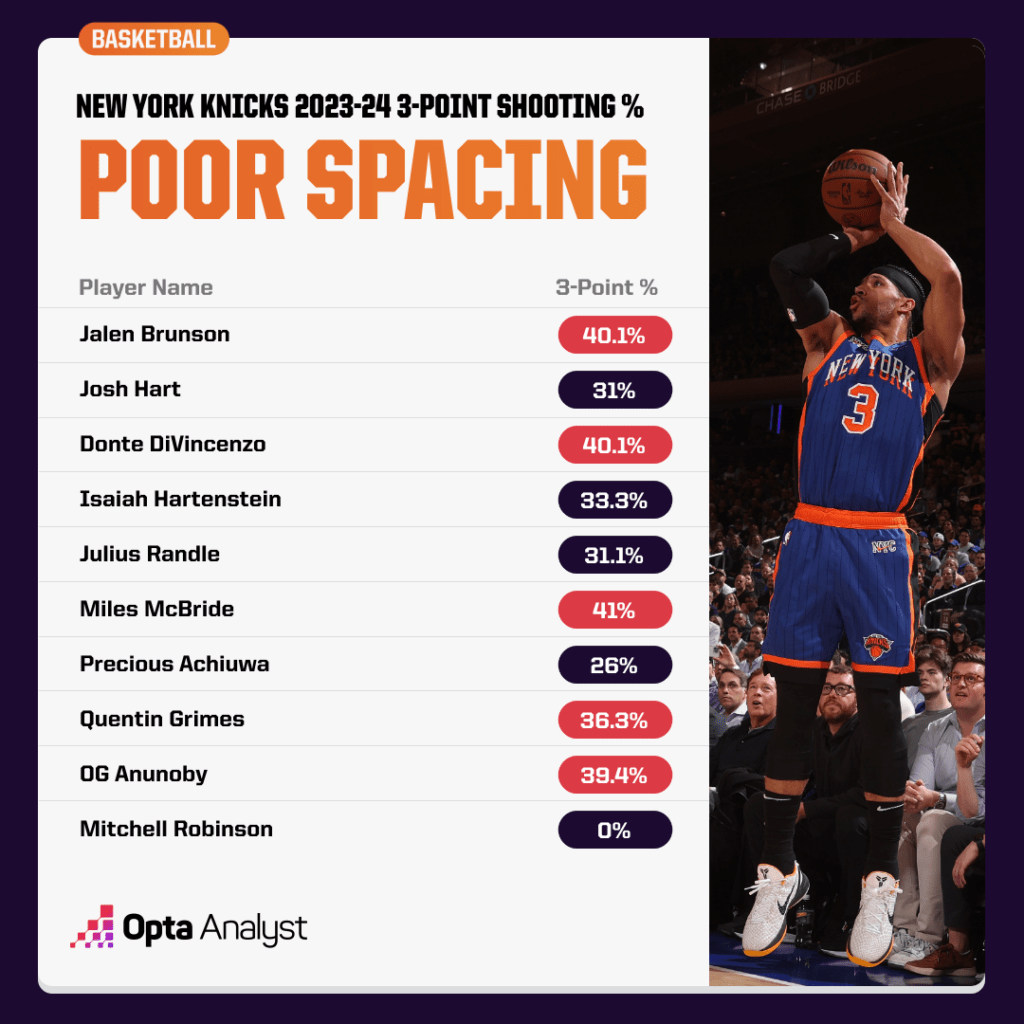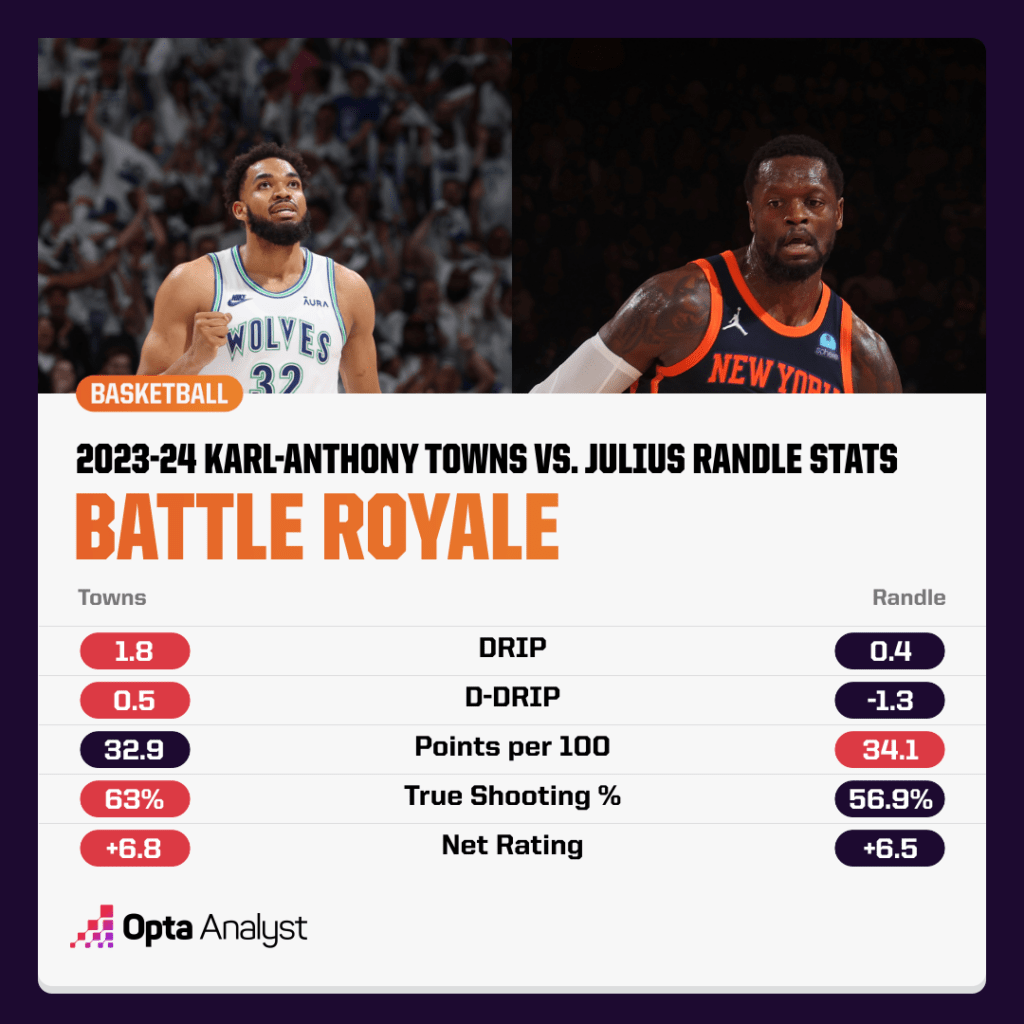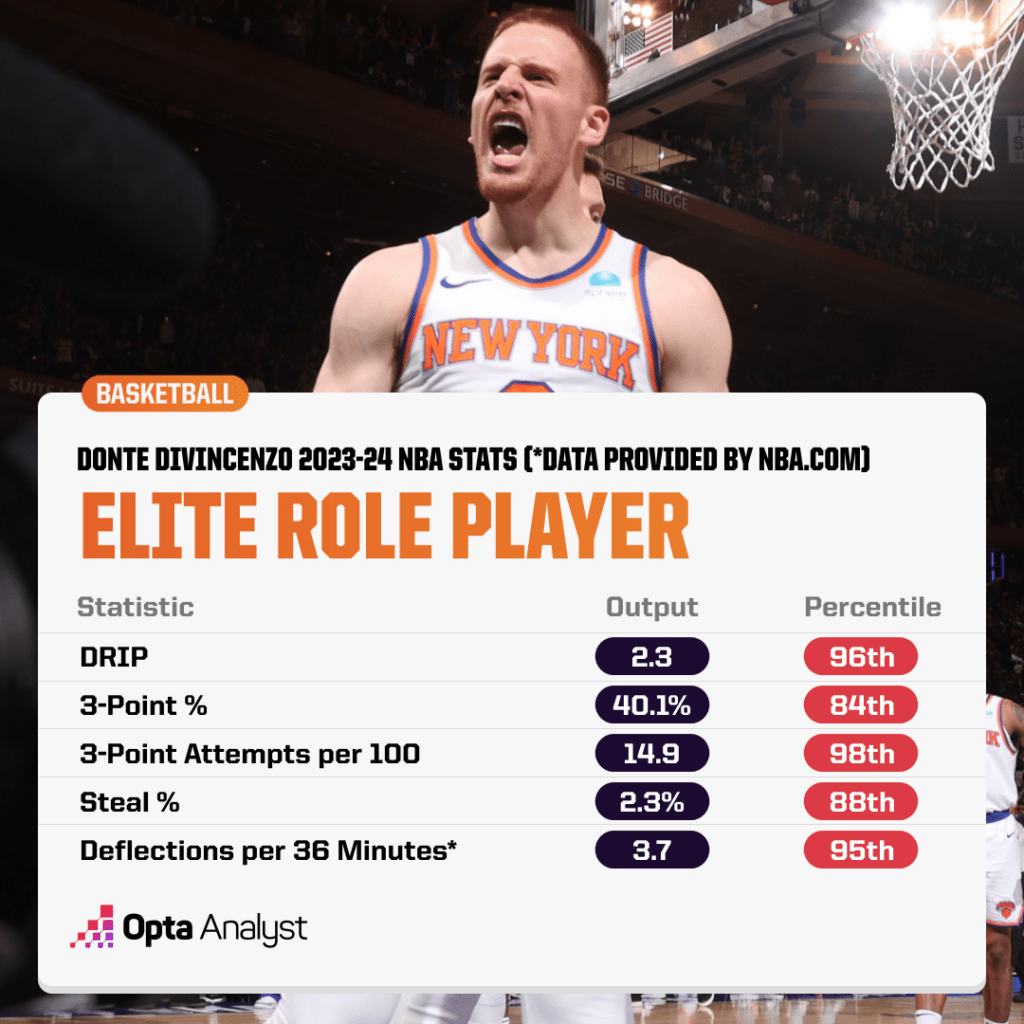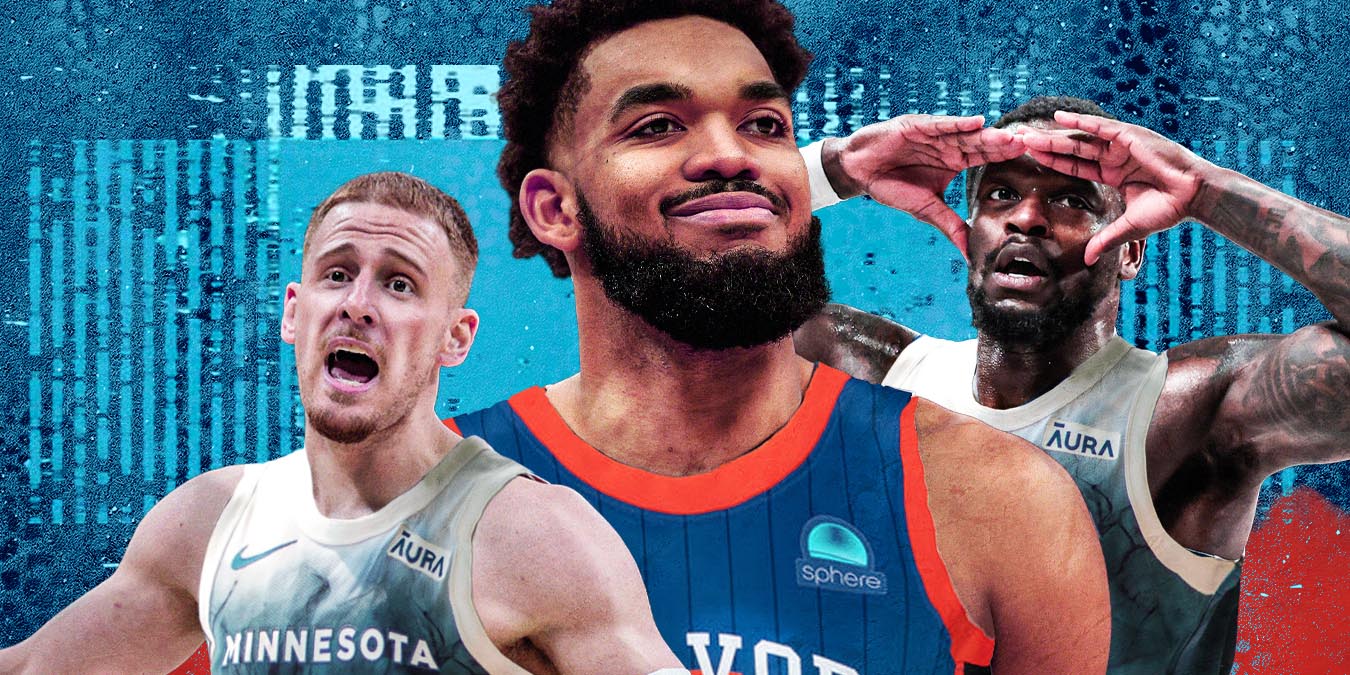The NBA world was blindsided by a blockbuster trade that sent four-time All-Star and two-time All-NBA big man Karl-Anthony Towns to the New York Knicks.
Needless to say, this is a monster move that has massive implications for all the parties involved. But how did each of these teams fare in the late Friday night deal?
Let’s grade the trade (using the data!) from all the angles.
New York Knicks
- Out: Donte DiVincenzo, DaQuan Jeffries, Julius Randle, future first round pick (via Detroit Pistons), cash considerations/draft compensation to be announced later
- In: Karl-Anthony Towns
In their second blockbuster deal of the offseason (and third in the last 10 months), the Knicks announce to the basketball world that they are all the way in on their current core.
Towns is the best player involved in this deal (92nd percentile in DRIP, which is a projection of a player’s contribution to his team’s plus/minus per 100 possessions) and one of the most gifted offensive players on the planet (91st percentile offensive DRIP).
Among his numerous contributions, Towns will offer the Knicks something they desperately need around Jalen Brunson: spacing.
Of the Knicks’ top-10 players in minutes played last year, the only ones with a 3-point percentage above 36% were Brunson (the guy the spacing is intended for), DiVincenzo (no longer with team), Miles McBride, Quentin Grimes (also not with team anymore), and OG Anunoby (39.4%).
Between KAT, Mikal Bridges (career 37.5% 3-point shooter), and free-agent signing Landry Shamet (38.4%), the Knicks will be adding plenty of reinforcements in this area.

Towns will also act as a more efficient secondary creator than Randle. Even at his best, Randle’s true shooting (see below) pales in comparison to Towns’ (63%). With Towns, the offense (one that finished fifth in offensive TRACR or O-TRACR rankings in 2023-24) now has a higher ceiling.
Our TRACR model uses advanced metrics and other factors to calculate how many points per 100 possessions better or worse teams are or were compared to the league-average club during a given season.
The question now is: What about the defense?

Before this Knicks trade, a common critique of the roster was its lack of depth at center. After losing Isaiah Hartenstein to the Oklahoma City Thunder in free agency, the team was left with just Mitchell Robinson and Precious Achiuwa to man the middle heading into training camp. But half of that plan went up in flames when it was announced Robinson would miss an indefinite amount of time.
Towns offers a temporary fix to this issue. Tom Thibodeau can run the Kentucky product at the 5 alongside Brunson, Hart, Bridges and Anunoby as they hope to challenge the Boston Celtics in the East.
The three forwards offer a stout defensive infrastructure, and as we mentioned earlier, Towns has made some significant strides as a defender (77th percentile in defensive DRIP or D-DRIP). Plus, we’ve already seen before that you can build a solid defense with Towns at the 5 (13th in D-TRACR in 2021-22).
With that said, long term, I’m not certain how tenable Towns at center is in this NBA. A 13th-ranked defense is respectable, but it isn’t enough to compete for a title (unless you have an elite offense, which isn’t a guarantee with this team).
To have a true title contender, the Knicks will need a top-10 defense. To do that, there will need to be times when he can play the power forward spot next to a traditional big man like he did with Rudy Gobert. That means that Robinson will have to get healthy, or they will have to flip him for someone who can wear this hat (like Clint Capela or Robert Williams III).
The uncertainty of that situation forces us to deduct some points from the Knicks.
If the reports about DiVincenzo’s dissatisfaction are correct, the Knicks also get credit for moving off him before that became an issue that diminished his trade value.
Grade: A-
Minnesota Timberwolves
- Out: Karl-Anthony Towns
- In: Donte DiVincenzo, Julius Randle, future first round pick (via Detroit Pistons)
For the most part, this move is being billed as a long-term move for a Timberwolves team that is fresh off its first playoff run to the Western Conference finals in the last two decades.
By swapping Towns – who is set to begin the first year of a four-year, $220 million extension (per Spotrac) – for Julius Randle (who is making half that over the next four seasons – roughly $117.1 million) and Donte DiVincenzo (second year of a four-year, $47 million deal), the Timberwolves give themselves a lot more financial flexibility than they would have if they bound themselves to their current (very expensive) core that may or may not be good enough to get the job done.
In theory, this move seems like the type that defeats the purpose of participating in professional sports. What good is having cap space flexibility if it means you’re going to sacrifice the best chance you’ve had at a title in the last 20 years?
That’s the hidden beauty of this trade. Yes, it gives the Wolves more future elasticity, but there is a world where it also makes them a better team in 2024-25.
Over the last few seasons, Randle has developed a reputation for being an inefficient chucker – the exact opposite of what you want on a title contender. And while there is some merit to these claims (see his 2021-22 season), this is far from the truth. During his time flanking Brunson, Randle proved that he could slot into a secondary creator role.
After a historically slow start to the 2023-24 season, Randle really found his groove playing alongside Brunson. From Nov. 12 until his season-ending injury, Randle appeared in 38 games and averaged 25.1 points, 8.8 rebounds and 5.0 assists on 59.7% true shooting (that would have been in the 68th percentile for the entire season).
In that stretch, the Knicks went 25-13 (54-win pace).
There is a chance that Randle is able to act as a cheaper version of Towns in this offense that’s headlined by Anthony Edwards and learn how to tread water like the Dirk disciple did on defense. If that happens, it means that Minnesota was basically able to add a strong role player (96th percentile in DRIP) in DiVincenzo for hardly anything.

The element holding the Timberwolves back from getting a perfect grade here is that there is a version of the timeline in which this trade does make them worse in the short term. Even with how well he played last year, Randle is still a worse offensive player and significantly worse shooter (a career 33.3% 3-point shooter, while Towns is a career 39.8% 3-point shooter). So, an already subpar offense (15th in O-TRACR) could be taking a major hit.
DiVincenzo, who shot 40.1% on 8.7 3s per game last year, will certainly help fill in the void left by Towns. Unfortunately, he isn’t as good of a creator as Mike Conley or as tall (he’s 6-foot-5) as Jaden McDaniels or Randle.
So, the Timberwolves will run into the same problem they did last season and struggle to put together lineups with a good balance of offense/spacing and size/defense.
Grade: B+
Charlotte Hornets
- Out: N/A
- In: DaQuan Jeffries, cash considerations/draft capital to be announced later
Let’s also get the Hornets wrinkle of this trade squared away. The Hornets’ role in this deal is simply to absorb cap space to make the money work, which they will accomplish by using part of an exception.
As a reward for their services, they will be gifted some draft capital from the Knicks that will be named later.
This is exactly the type of move the Hornets need to be involved in. They added more ammo to their weapons brigade, and all they had to sacrifice was cap space that they weren’t using anyway.
Grade: A
Be sure to check out our MLB, NBA, NFL and college football coverage. And follow us on X and Instagram for more!
